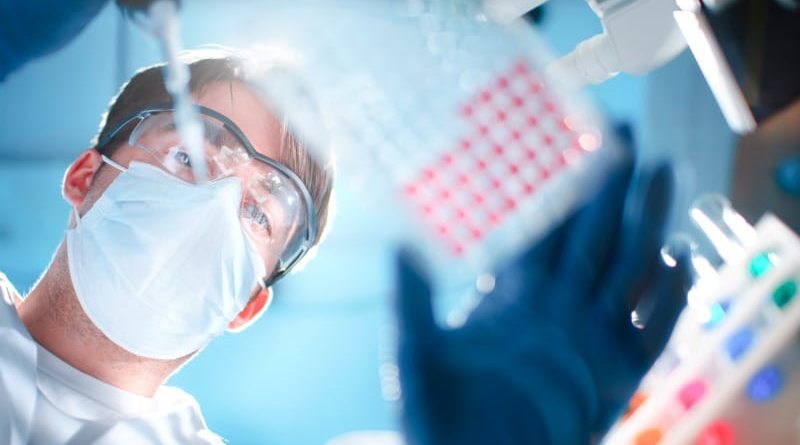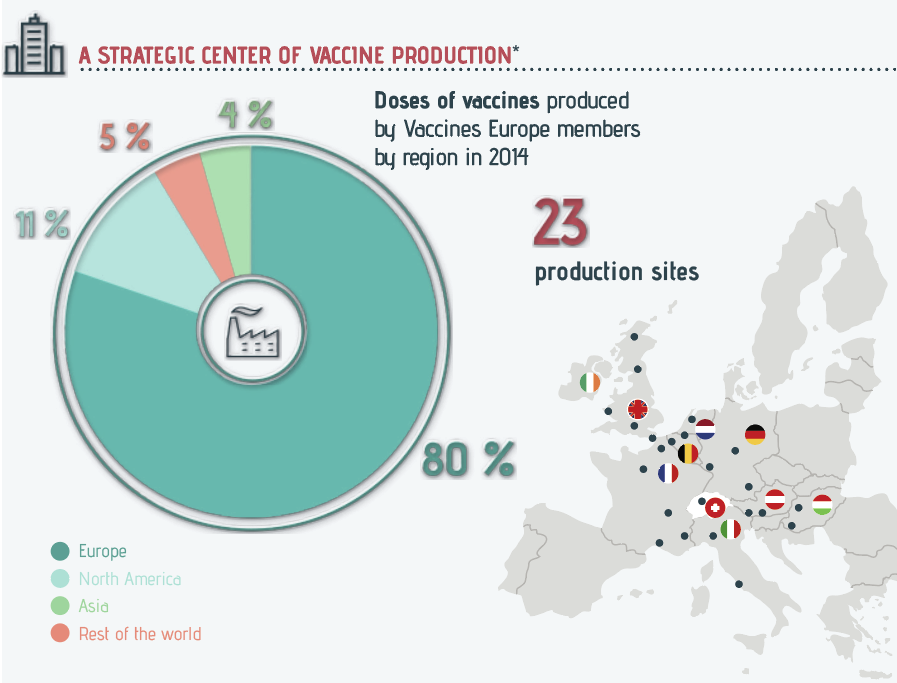
Securing a robust vaccine sector in Europe
Vaccination certainly constitutes one of the most cost-effective preventive measures existing today and a foundation of public health programmes in Europe and worldwide. Vaccines play a fundamental role in reducing the morbidity associated to a number of diseases, including certain types of cancer and chronic conditions. Vaccines are also part of the solutions to reduce antimicrobial resistance. Today, there is a vast range of vaccines available to protect against more than 30 infectious diseases – and there are new vaccines on the horizon with the potential to prevent even more.
Vaccination, therefore, makes a substantial contribution to health, healthcare systems, and society at large, and health is the cornerstone for a competitive economy. However, health systems are still largely built on treating illness, not promoting health. In Europe, the overall spending on primary prevention and vaccination is relatively low compared to overall healthcare spending: on average, less than 3%1, and 0.5% of Member States’ total healthcare budgets respectively is dedicated to immunization programmes2. The number of publicly funded vaccines included in national immunisation programs still significantly differs within Europe3. Moreover, only a few countries start to account for the change in demographics that we are all experiencing with many Vaccine Preventable Diseases (VPDs) remaining uncovered due to insufficient budget provision. When it comes to investing in healthcare, we should ask ourselves whether the balance is right.
Vaccines are a distinctive product for a number of reasons. First of all, they are a prevention tool administered to a large number of healthy people which is affecting the benefit-risk assessment. Secondly, compared to other medicines, vaccines are highly technical biological products with complex and lengthy manufacturing, control and release processes, starting from live micro-organisms to end with safe and sterile products. These special features mean that the development and production of vaccines are particularly time-consuming, demanding, complex and costly and expose it to numerous risks for disruption.
More broadly, the vaccine industry constitutes a strategic sector for the European economy.
 Europe has a long history of vaccine discovery, development and manufacturing, and benefits from a strong industrial infrastructure. While major innovative vaccine manufacturers are global in nature, many of their operations are based in Europe. 80% of vaccine doses produced by Vaccines Europe (VE) members are being manufactured in the European region and 86% of these doses are exported for worldwide use4. Guided by the constant pursuit of innovation, the vaccine industry scores a 16% of revenues invested in research. This high rate of investment is 50% greater than the software and computer services5. Keeping Europe’s lead in such a key sector and ensuring that European citizens benefit from the value of vaccination requires a concerted and coordinated effort by all stakeholders.
Europe has a long history of vaccine discovery, development and manufacturing, and benefits from a strong industrial infrastructure. While major innovative vaccine manufacturers are global in nature, many of their operations are based in Europe. 80% of vaccine doses produced by Vaccines Europe (VE) members are being manufactured in the European region and 86% of these doses are exported for worldwide use4. Guided by the constant pursuit of innovation, the vaccine industry scores a 16% of revenues invested in research. This high rate of investment is 50% greater than the software and computer services5. Keeping Europe’s lead in such a key sector and ensuring that European citizens benefit from the value of vaccination requires a concerted and coordinated effort by all stakeholders.
Vaccine manufacturers strive to anticipate and respond to production issues and to continuously improve production processes, invest in new sites or expand the existing ones. A quick response to increased demand is most of the times not feasible due to the long vaccines production lead times and to the time needed to increase capacity.Since the production of vaccines involves biological processes, the manufacturing of one lot of vaccine takes between 12 months for monovalent vaccines and more than 36 months for some complex multivalent vaccines. Up to 70% of that time is dedicated to quality control. The increase of production capacities through the construction of a new plant may take between 5 and 10 years from inception to production and release of the first vaccine lot.
In contrast to the broader pharmaceutical industry, the global vaccine market is limited to relatively few manufacturers. It is due to the manufacturing complexity of biological products, the need for significant investments up front to develop new products, building and maintaining the facilities, and guaranteeing the quality of the product with increasing regulatory requirements. All this, together with a cost-driven policy that does not sufficiently incentivise research and development efforts, makes the vaccine industry a “fragilised” sector. We have seen that some European countries have divested national vaccine manufacturing (e.g. Rijksinstituut voor Volksgezondheid en Milieu (RIVM) in the Netherlands and Statens Serum Institut (SSI) in Denmark), and the same is happening in the private sector with companies leaving the vaccine space6.
This is worrisome and, in this context, a well-balanced vaccine ecosystem, which recognises the true value of current and future vaccines as well as the strategic value of the EU vaccine industry is absolutely critical.
What can we all do together to make sure we keep Europe at the centre of vaccine research and manufacturing in the futur?
The research-based vaccine industry in Europe continues to be committed to 1) invest in future vaccines and capacity building, to 2) seek efficiencies and innovative solutions to further improve manufacturing and supply, and to 3) work with National and European authorities and stakeholders on the solutions proposed in the Council Recommendation on strengthened cooperation against vaccine-preventable diseases and the Joint Action on Vaccination, especially on research, development and improving sustainable supply of vaccines in Europe and globally.
In addition, Vaccines Europe recommends (1) to address the lack of a stable policy environment to support vaccine innovation with appropriate pull mechanisms, together with a fair recognition and reward of vaccines value, (2) to continuously interact with all stakeholders from the earliest stages of development – especially regulatory authorities and recommending bodies to ensure that resources are not spent on developing vaccines that are unlikely to be approved and recommended, (3) to better connect and coordinate vaccine research while also focusing on research for diseases of low-income countries and pandemic preparedness to better anticipate and prepare for future health threats,which is one of the greatest challenges of our time (4) to keep the right balance between treatment and prevention when it comes to investing inhealthcare and to account for the shift in demographics in Europe within the national immunisation plans.
Keeping Europe’s lead in such a key sector is crucial if the EU does not want to become reliant on imported vaccine supplies and ensure that European citizens benefit from the value of vaccination.
1 – Gmeinder M; Morgand D;Mueller M (2017). How much do OECD countries spend on prevention? https://www.oecd-ilibrary.org/docserver/f19e803c-en.pdf?expires=1569405811&id=id&accname=guest&checksum=6744C8AF05558BA46D9F2FB79CEBD486
2 – Olivier Ethgen & others https://www.ncbi.nlm.nih.gov/pmc/articles/PMC4994728/
3 – https://www.sciencedirect.com/science/article/pii/S0264410X18308727?via%3Dihub
4 – Data provided by WifOR Institute is based on the 2018 EU Industrial R&D Investment Scoreboard https://publications.jrc.ec.europa.eu/repository/bitstream/JRC113807/eu_rd_scoreboard_2018_online.pdf
5 – https://www.pharmaceutical-technology.com/news/newsgsk-pharma-completes-acquisition-of-novartis-healthcares-vaccines-business-4683437/




